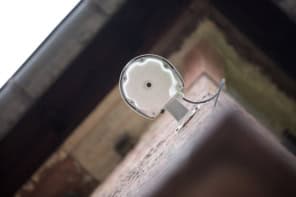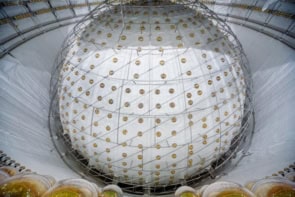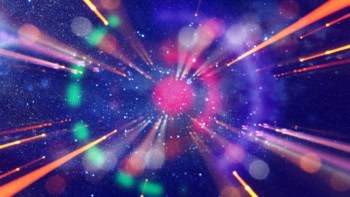Physicists have devised an experiment that could clarify whether hypothetical ultralight particles called axions -- which some claimed were glimpsed in the lab last year -- exist for real. It involves using space telescopes to check whether gamma rays from a quasar billions of light years away can travel through the Sun by interacting with its magnetic field (Phys. Rev. Lett. 98 201801).

light?
Axions are ultralight particles that were first postulated in the 1970s to resolve a discrepancy between experimental findings and the theory of the strong force. But more recently, theorists have begun to wonder if axions could also be the particles that make up dark matter – the substance thought to form most of the mass in our universe.
Because axions interact so weakly with matter, most experiments hoping to detect them exploit the fact that photons should sometimes be able to turn into an axion in the presence of a magnetic field, and vice-versa. In March last year, researchers at the PVLAS experiment in Italy thought they had glimpsed this conversion process – and hence axions – for the first time when they registered a slight change in the polarization of a laser beam as it passed through a magnetic field in a vacuum.
If this axion interpretation were true, however, it would imply axions have too strong a coupling to light to be suitable dark matter candidates. Moreover, an experiment at CERN called CAST, which has been hoping to convert solar photons into axions in a 10-m long test magnet, has found no evidence for axions with the coupling strength implied by PVLAS. In light of these contradictory results, other experiments – most notably the axion-like particle search (ALPS) at the DESY lab in Hamburg – are trying to discount the PVLAS result. These involve shining light into an opaque wall, and checking whether any can get through by being temporarily converted into axions by a magnetic field.
According to Malcolm Fairbairn of CERN and colleagues from Germany and Russia, however, a simpler version of this “shining light through the wall” technique presents itself every October when the Sun comes between the Earth and the distant quasar 3C 279. In this alignment, the Sun would act as the wall, and the source of light would be the quasar. If axions with the coupling strength implied by PVLAS exist, then a small number (2%) of the quasar’s gamma-ray photons glancing the surface of the Sun would interact with its magnetic field and be converted into axions, which would then travel through the Sun unhindered. Upon reaching the other side, the axions would be re-converted back into photons by the magnetic field. Fairbairn’s plan is to look for these photons using space-based gamma-ray telescopes during the October alignments. If no gamma rays are detected, this would be compelling evidence that the axion interpretation of PVLAS’s data is wrong.
Fairbairn has already checked existing observations of 3C 279 by the EGRET experiment taken in 1991 to look for signs of the quasar’s gamma rays, but found that the data were not detailed enough to be able to tell either way. However, he thinks that the GLAST experiment, due to be launched in December this year, will be sensitive enough to make a firm conclusion. Nonetheless, he may be too late if the ALPS experiment, which is scheduled to start up this summer, returns a null-result first.



